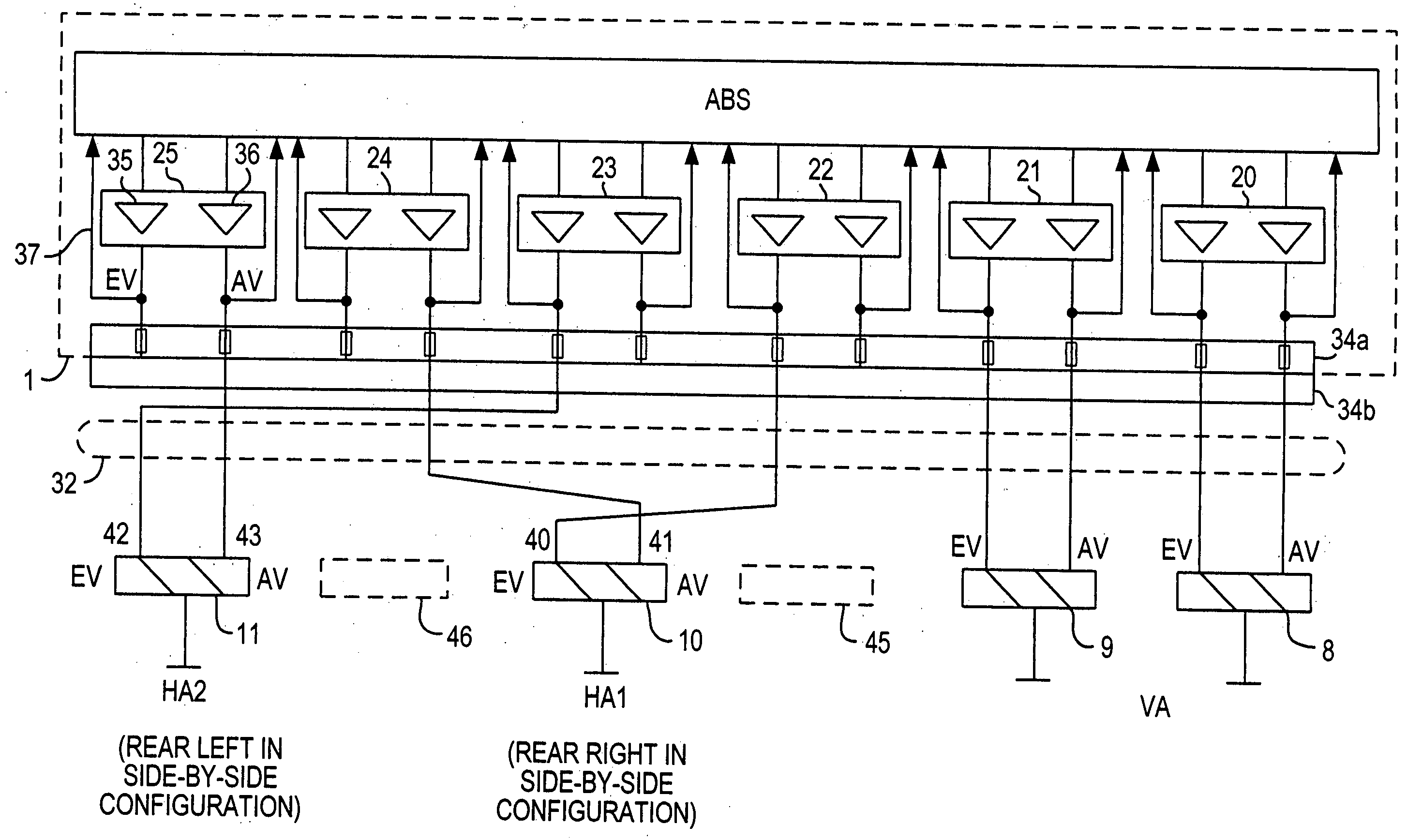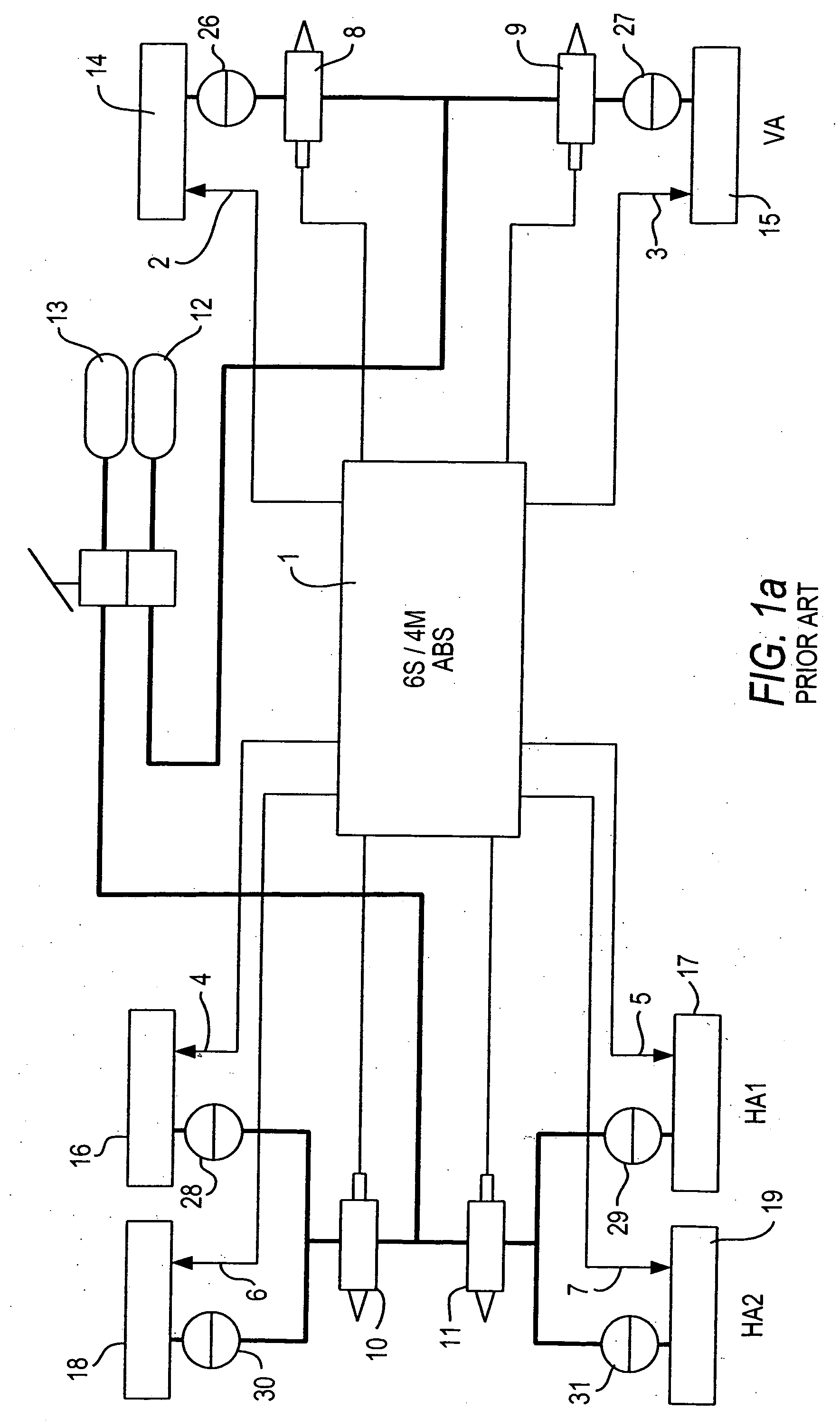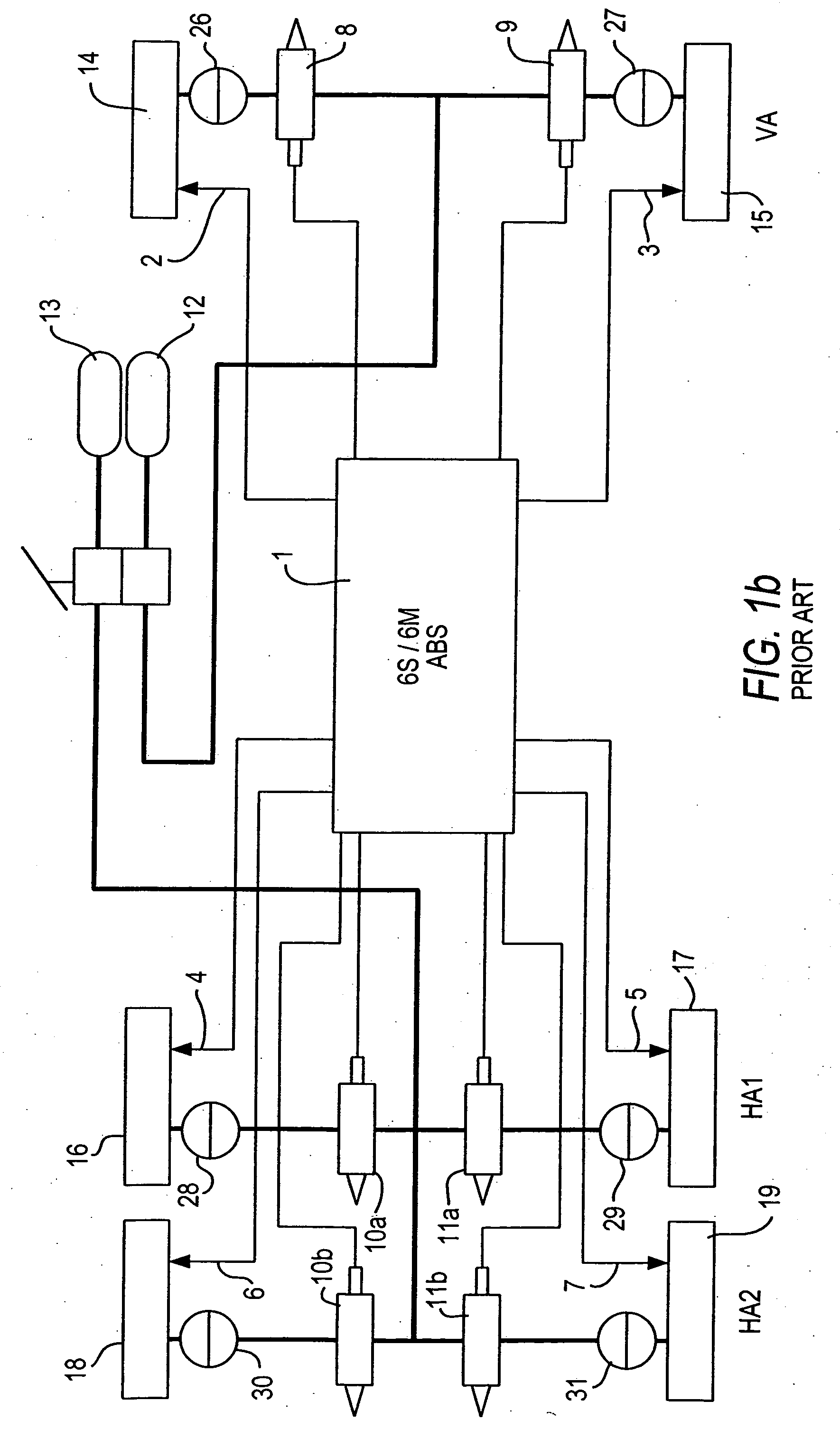Vehicle anti-lock brake system and method
a technology of anti-lock brakes and brakes, which is applied in the direction of brake systems, braking components, transportation and packaging, etc., can solve the problems of not being equipped with sensing devices, the full system is complex and cost, and the cost of production and warehousing is higher
- Summary
- Abstract
- Description
- Claims
- Application Information
AI Technical Summary
Benefits of technology
Problems solved by technology
Method used
Image
Examples
Embodiment Construction
[0028] Referring now to the drawing figures where like reference numerals are used for corresponding parts, FIG. 1a shows, in a simplified, schematic diagram, a conventional 6S / 4M ABS (partial system) for a commercial tri-axle vehicle. The vehicle wheels 14 to 19 are associated with three axles, namely, a front axle VA, a first rear axle HA1 and a second rear axle HA2. The axles VA, HA1 and HA2 are preferably equipped with wheel speed sensors 2 to 7. The sensors 2 to 7 deliver speed signals to an ABS ECU 1.
[0029] If the wheels 14 to 19 exhibit a tendency to lock, the ABS ECU 1 actuates brake pressure modulators 8 to 11 in known manner, so that brake pressure in brake cylinders 26 to 31 can be increased, maintained or reduced. The brake medium, such as, for example, compressed air, is preferably contained in reservoirs 12, 13. It should be understood that hydraulic fluid can also be used as the brake medium. Furthermore, brakes applied by electric motors can also be used. The workin...
PUM
 Login to View More
Login to View More Abstract
Description
Claims
Application Information
 Login to View More
Login to View More - R&D
- Intellectual Property
- Life Sciences
- Materials
- Tech Scout
- Unparalleled Data Quality
- Higher Quality Content
- 60% Fewer Hallucinations
Browse by: Latest US Patents, China's latest patents, Technical Efficacy Thesaurus, Application Domain, Technology Topic, Popular Technical Reports.
© 2025 PatSnap. All rights reserved.Legal|Privacy policy|Modern Slavery Act Transparency Statement|Sitemap|About US| Contact US: help@patsnap.com



